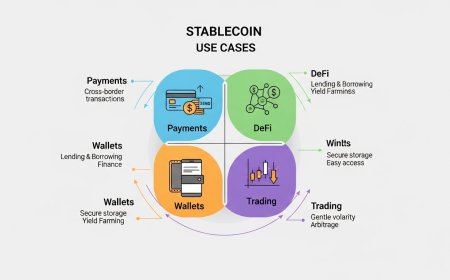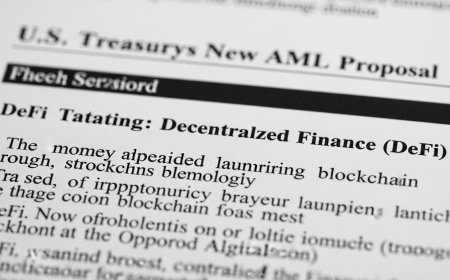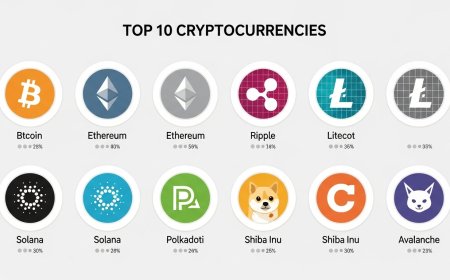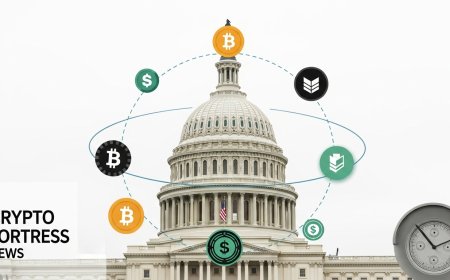U.S. Banks Explore Stablecoins: BofA & Morgan Stanley Join Race
Major U.S. banks (BofA, Morgan Stanley, Citi, JPMorgan) are actively planning stablecoin launches to integrate with future digital payments infrastructure.

U.S. Banks Explore Stablecoins: BofA & Morgan Stanley Join Race
Major U.S. financial institutions are positioning themselves at the forefront of the digital currency revolution, with Bank of America, Morgan Stanley, Citigroup, and JPMorgan Chase actively exploring stablecoin issuance as part of their broader digital transformation strategies. This coordinated move by America's largest banks represents a significant shift in the traditional banking sector's approach to cryptocurrency and could fundamentally reshape the landscape of digital payments.
The exploration of stablecoin technology by these banking giants comes amid growing regulatory clarity and increased institutional adoption of digital assets. These developments signal a new era where traditional financial institutions are no longer viewing cryptocurrencies as competitive threats but rather as complementary technologies that can enhance their service offerings and operational efficiency.
Industry sources indicate that these banks are in various stages of development, from preliminary research to advanced pilot programs, as they seek to integrate stablecoin capabilities into their existing payment infrastructure. This initiative represents one of the most significant endorsements of cryptocurrency technology by traditional financial institutions to date.
Banking Industry's Digital Currency Strategy
The movement toward stablecoin adoption among major U.S. banks reflects a strategic response to changing consumer preferences and the evolving regulatory landscape. Bank of America has been particularly vocal about its digital currency initiatives, with executives indicating that stablecoins could play a crucial role in the bank's future payment processing capabilities.
Morgan Stanley's approach focuses on integrating stablecoin technology with its existing wealth management services, potentially offering clients new ways to manage and transfer digital assets. The investment banking giant has been building internal capabilities to support cryptocurrency-related services, making stablecoin issuance a logical next step in its digital asset strategy.
Citigroup has taken a more cautious but systematic approach, conducting extensive research into the regulatory implications of stablecoin issuance while building the technical infrastructure necessary to support such initiatives. The bank's global presence makes it particularly well-positioned to leverage stablecoins for cross-border payments and international trade finance.
JPMorgan Chase, already operating JPM Coin for institutional clients, represents the most advanced player in this space. The bank's experience with blockchain-based payment systems provides valuable insights for other institutions looking to enter the stablecoin market. JPMorgan's continued investment in this technology demonstrates the long-term viability of bank-issued digital currencies.
Regulatory Environment and Compliance Considerations
The timing of these stablecoin initiatives coincides with significant regulatory developments that are providing greater clarity for financial institutions seeking to enter the digital currency space. Recent guidance from federal banking regulators has outlined specific frameworks for bank-issued stablecoins, addressing key concerns about consumer protection, monetary policy, and financial stability.
The Office of the Comptroller of the Currency has indicated that national banks can engage in certain cryptocurrency activities, including stablecoin issuance, provided they meet specific operational and risk management requirements. This regulatory clarity has removed many of the barriers that previously prevented banks from exploring digital currency initiatives.
Federal Reserve officials have also expressed support for bank-issued stablecoins, viewing them as potentially complementary to a central bank digital currency (CBDC) while offering immediate benefits for payment system efficiency. This endorsement from monetary policy authorities has provided additional confidence for banks considering stablecoin programs.
Compliance frameworks being developed by these institutions focus on anti-money laundering (AML) requirements, know-your-customer (KYC) protocols, and consumer protection measures. Banks are leveraging their existing compliance infrastructure to ensure that stablecoin operations meet the same regulatory standards as traditional banking services.
Technical Infrastructure and Implementation
The technical architecture being developed by these banks for stablecoin issuance reflects sophisticated approaches to blockchain integration and digital asset management. Bank of America's research teams have been exploring various blockchain platforms, evaluating factors such as transaction throughput, energy efficiency, and interoperability with existing banking systems.
Morgan Stanley's technical approach emphasizes integration with existing trading and settlement systems, allowing for seamless incorporation of stablecoin transactions into the bank's broader operational framework. The institution is particularly focused on ensuring that stablecoin operations can scale to meet institutional client demands while maintaining the security and reliability expected of traditional banking services.
Citigroup's technical strategy involves building modular systems that can adapt to different regulatory requirements across various jurisdictions. Given the bank's global operations, this flexibility is crucial for ensuring that stablecoin services can be deployed internationally while meeting local regulatory standards.
The infrastructure being developed includes advanced security measures, real-time monitoring systems, and automated compliance reporting capabilities. These technical investments demonstrate the banks' commitment to treating stablecoin issuance as a core banking service rather than an experimental initiative.
Market Impact and Competitive Implications
The entry of major U.S. banks into the stablecoin market is expected to have significant implications for the broader cryptocurrency ecosystem. Bank-issued stablecoins could provide greater stability and regulatory compliance than existing alternatives, potentially attracting institutional clients who have been hesitant to engage with cryptocurrency markets.
These developments also represent increased competition for existing stablecoin issuers such as Tether and USD Coin, which have dominated the market through their early entry and established user bases. Bank-issued alternatives could offer enhanced regulatory compliance and institutional trust, potentially capturing market share from existing players.
The integration of stablecoins into traditional banking services could also accelerate broader cryptocurrency adoption by providing familiar institutions with digital currency capabilities. This bridge between traditional finance and cryptocurrency markets could reduce barriers to entry for consumers and businesses seeking to engage with digital assets.
Payment processing companies and fintech firms are closely monitoring these developments, as bank-issued stablecoins could disrupt existing payment infrastructure and create new competitive dynamics in the digital payments space. The ability of banks to leverage their existing customer relationships and regulatory standing provides them with significant advantages in this emerging market.
Consumer and Business Applications
The stablecoin initiatives being developed by these banks are designed to address specific use cases that align with their existing service offerings. Bank of America's focus on consumer banking suggests that its stablecoin could be integrated into mobile banking applications, allowing customers to make digital payments and transfers with greater efficiency than traditional methods.
Morgan Stanley's wealth management orientation indicates that its stablecoin services could be tailored for high-net-worth clients seeking sophisticated digital asset management capabilities. This could include features such as programmable payments, smart contract integration, and enhanced reporting capabilities for tax and compliance purposes.
Cross-border payment applications represent a significant opportunity for all participating banks, as stablecoins can potentially reduce the cost and complexity of international transfers. This capability could be particularly valuable for corporate clients engaged in global trade and finance.
Small and medium-sized businesses could benefit from bank-issued stablecoins through improved payment processing capabilities, reduced transaction costs, and enhanced cash flow management tools. The integration of stablecoins into existing business banking services could provide these clients with access to digital currency benefits without requiring specialized technical expertise.
Future Outlook and Strategic Implications
The coordinated exploration of stablecoin technology by major U.S. banks represents a watershed moment for the cryptocurrency industry and traditional finance. This development suggests that digital currencies are transitioning from experimental technology to essential banking infrastructure, with far-reaching implications for the financial services sector.
The success of these initiatives could pave the way for broader adoption of blockchain technology across banking operations, potentially transforming everything from trade finance to securities settlement. Banks that successfully implement stablecoin programs may gain significant competitive advantages in attracting clients seeking digital currency services.
Regulatory developments will continue to play a crucial role in shaping the trajectory of bank-issued stablecoins. Continued clarity from federal authorities could accelerate implementation timelines, while any regulatory uncertainty might slow progress or alter the strategic approaches being pursued by these institutions.
The integration of stablecoins into traditional banking services also raises important questions about the future of monetary policy and financial stability. As bank-issued digital currencies become more prevalent, central banks and regulators will need to adapt their oversight frameworks to address new risks and opportunities.
International coordination will become increasingly important as these banks expand their stablecoin operations globally. The ability to ensure interoperability and regulatory compliance across different jurisdictions will be crucial for realizing the full potential of bank-issued digital currencies.
As these major financial institutions continue to develop their stablecoin capabilities, the broader cryptocurrency market is likely to experience increased legitimacy and institutional adoption. This evolution represents a fundamental shift in how traditional finance views digital assets, with stablecoins serving as a bridge between conventional banking and the emerging digital economy.
What's Your Reaction?
 Like
0
Like
0
 Dislike
0
Dislike
0
 Love
0
Love
0
 Funny
0
Funny
0
 Angry
0
Angry
0
 Sad
0
Sad
0
 Wow
0
Wow
0































































